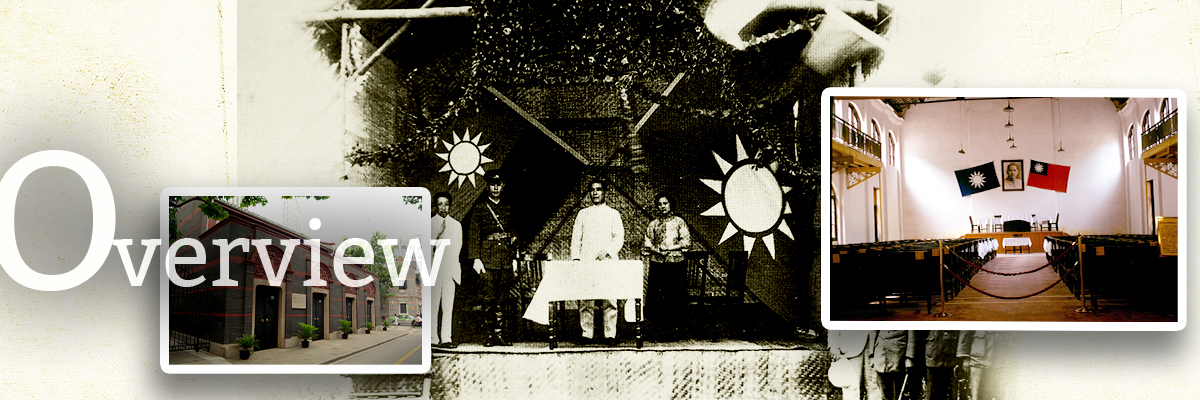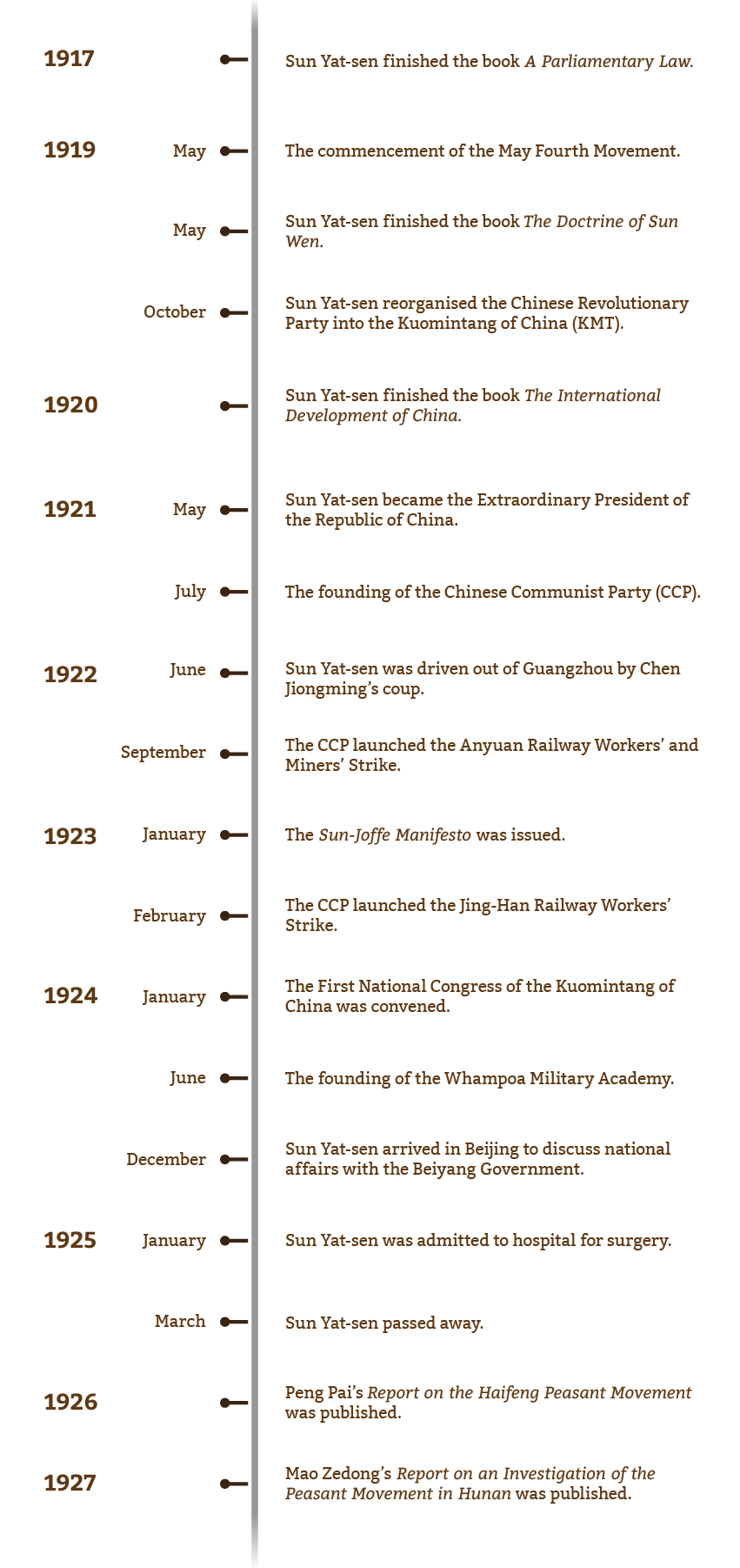Since the birth of the Republic, Sun Yat-sen (孫中山) suffered from many setbacks. Despite this, the undaunted Sun still devoted to exploring the revolutionary theories. He also constantly rethought the direction for China’s revolution. He became firmly convinced that both the northern and southern warlords were as bad as each other, and the imperialist powers would not give up their interests and privileges in China. To address China’s internal and external challenges, he had to rebuild a well-organised and disciplined revolutionary party, and raise a revolutionary army loyal to the party. Therefore, he restructured the Chinese Revolutionary Party (中華革命黨) into the Kuomintang of China (KMT, 中國國民黨) in October 1919 and began the lengthy reorganisation of the new party’s operations with the aid of Soviet Russia.
Meanwhile, the October Revolution in Russia and the May Fourth Movement in China accelerated the spread of Marxism in China. Under the guidance of the Communist International (Comintern), communist groups were set up all over China. In July 1921, the Chinese Communist Party (CCP, 中國共產黨) was officially founded with Chen Duxiu (陳獨秀) as its first General Secretary. Declared itself to be a party of the proletariat, the CCP had been an active leader of various workers’ and peasants’ movements since its formation. It played a key role in mass movements such as the Anyuan Railway Workers’ and Miners’ Strike (安源路礦工人大罷工) in 1922, the Jing-Han Railway Workers’ Strike (京漢鐵路工人大罷工) in 1923, and various peasant resistance movements in the provinces of Hebei (河北), Guangdong (廣東), and Hunan (湖南).
The KMT and the CCP both opposed the foreign imperialism and warlordism. The common stance laid foundation for their alliance. With Soviet Russia’s and the Comintern’s facilitation, Sun formulated the policy of “allying with Soviet Russia, accommodating the Chinese Communists”(聯俄容共), allowing the CCP’s members to join the KMT as individuals. Its approval by the First National Congress of the Kuomintang of China in January 1924 marked the beginning of the first KMT-CCP cooperation (1924-27). Later, the Whampoa Military Academy (黃埔軍校) was established, and Sun actively planned the Northern Expedition (北伐). When the Beiyang Government (北洋政府) invited him, the diligent Sun hurried back to Beijing (北京) to discuss national affairs. Sun’s long years of hard work for revolution claimed his health. On 12 March 1925, he passed away in Beijing, leaving behind his revolutionary aspirations and Northern Expedition for reunifying China unfulfilled. The KMT-CCP cooperation he forged would soon be facing a severe test.





